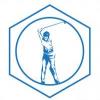EXPOSED: Peek Inside 9 of the Hottest Drivers in Golf
-
Who's Online 111 Members, 0 Anonymous, 822 Guests (See full list)
- ZachN97
- I like to hit bombs
- GolfSpy_BNG
- EasyPutter
- mward0516
- unccross
- SandSavedClubs
- JohnK
- chisag
- Finsfan
- LBC
- BigTiny
- LinksgolfFever
- rlcastle
- Kenny B
- Northern Monkey
- Sparky26
- Scooter 328
- Madden B
- Klorett
- bpricepiney
- Hamviper
- BBob
- Rob Person
- Berg Ryman
- Yawtzee
- jstarling
- TSauer
- I love fairways.
- Jmikecpa
- Vertical
- emirmohd
- Gary Patrick
- Golf2Much
- leftyrockets
- Patinrrc
- Michael.Sandoval33
- kryptonate01
- acrooster14
- Corentin Vadillo
- Wib081
- Jim Shaw
- cnosil
- Mr. Newcomb
- JRDuck40
- azstu324
- Stuka44
- Rico_de_Gallo
- BallsLeon
- Bohnson
- Shrek74
- Kobes31
- Mark Petrone
- musicalmedicine
- R.Vital
- MattYeast
- JFS2
- jbern
- troy1160
- Solo21
- WiTerp50
- Slypanther
- scubahoops
- DukeStKing
- moflo1972
- Friendship Teddybear
- HikingMike
- Tskeeze
- Giles
- SRI1982
- Larryw
- Golferteacher07
- Cfhandyman
- Wheelieb
- ChrisR227
- TJ Hall
- the_italian_cowboy
- GolfSpy_BEN
- BobSled
- Lostcause105
- Dead Solid Bogey
- Old Sarge 7997
- Richard Shows
- CS_408
- Fit_For_Golf
- Byrnzee
- Jake Fairbanks
- KeeganC
- ParFore74x
- Josh Holmes
- RyanJohnson_Official
- gingerbeast87
- Vonbundy
- lAwbOunC
- Siamese Moose
- schmidtty
- pruden6
- wely324
- rosco1963
- ctg44
- bwerth42
- Jean D
- Randy Dorn
- Stealthystinger
- GolfSpy_APH
- sumdaylowcapper
- Triple_Putt
- taylorjonasher
- RickM71
- DavidLPS
- Vspin1


Recommended Posts
Archived
This topic is now archived and is closed to further replies.